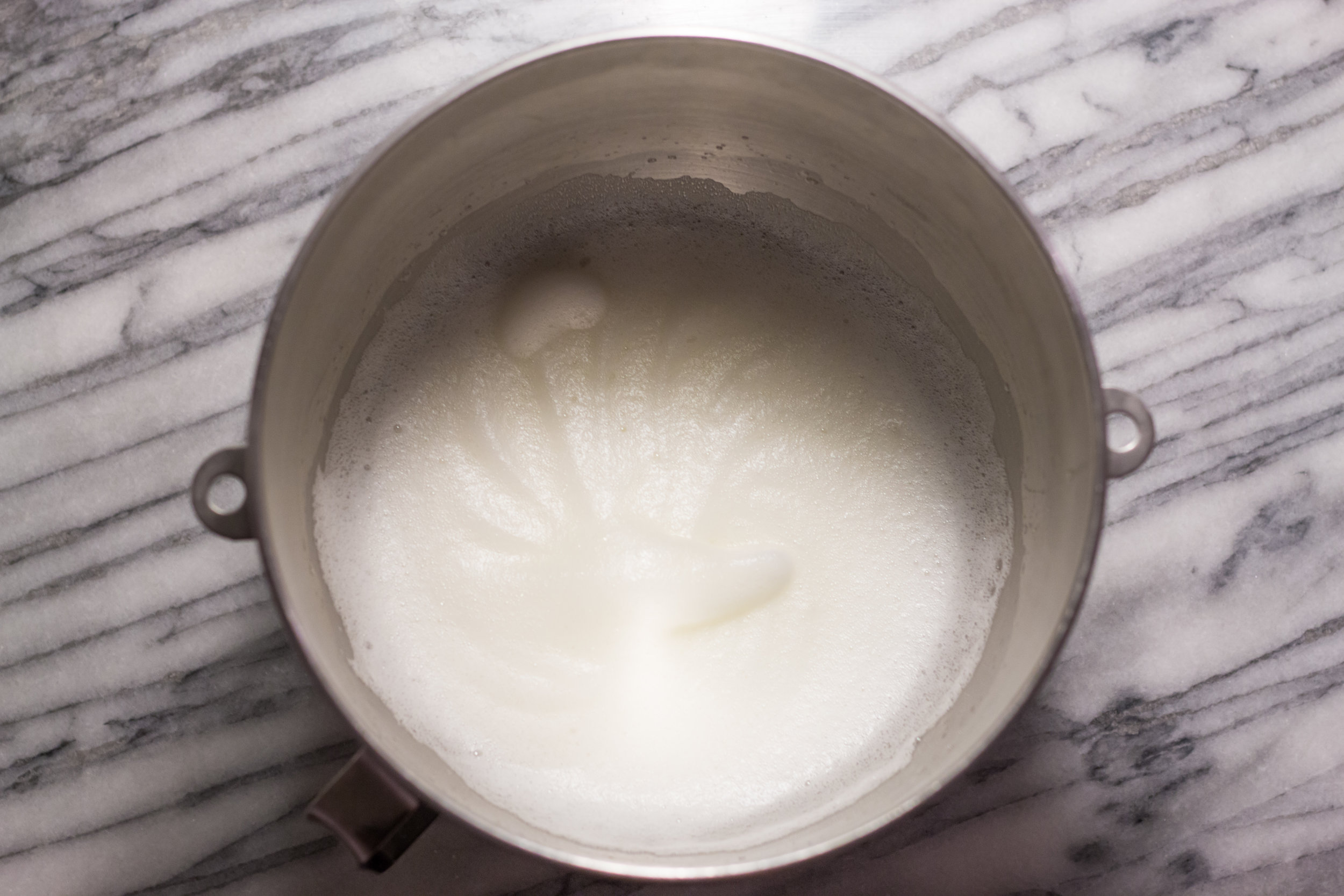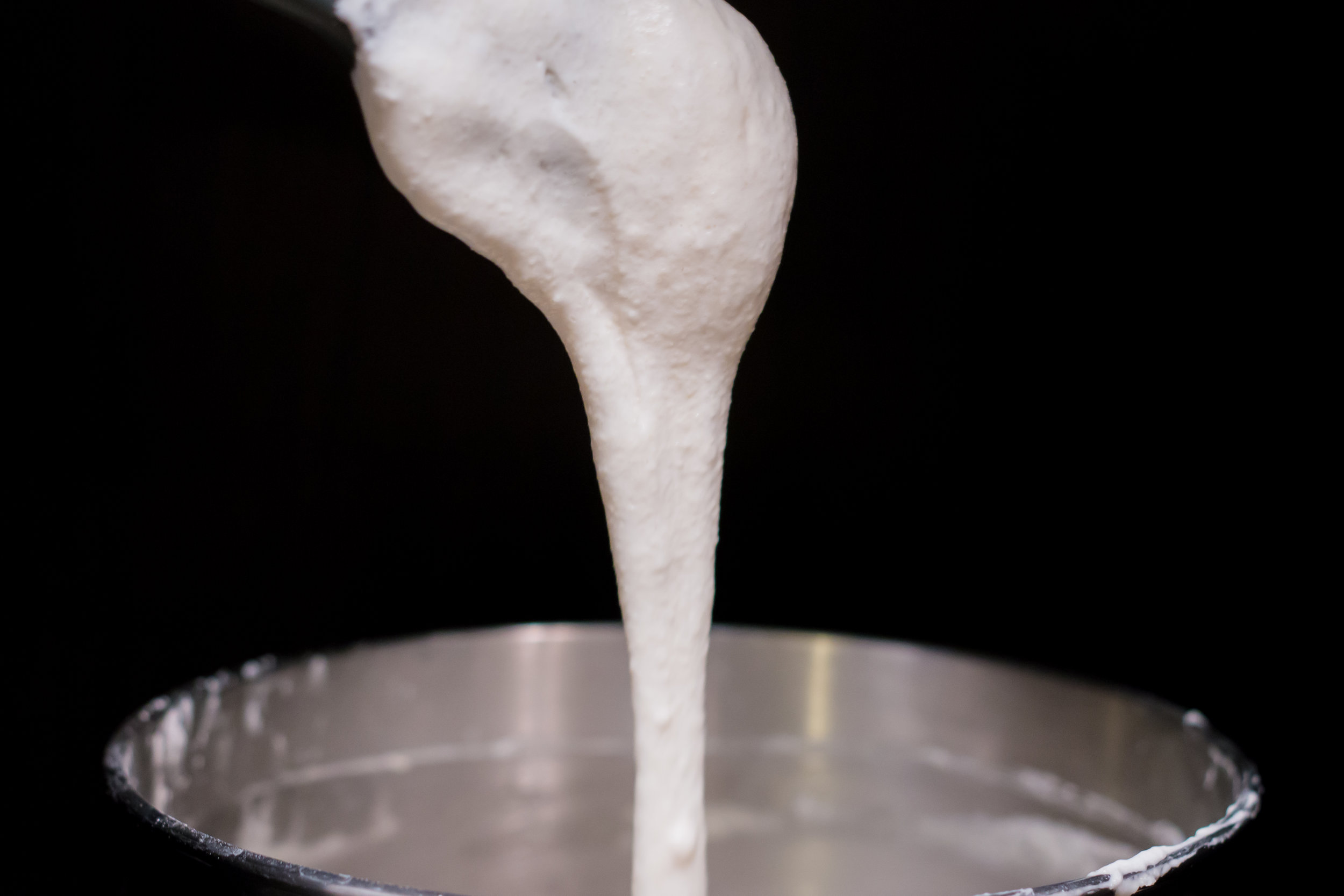French macarons
These delicate, meringue-based cookies are one of my go to confections, partly because they're so crowd-pleasing and partly because the flavor options are absolutely limitless. This is my base recipe, which can be adapted with flavor extracts and fillings for infinite combinations of slightly crunchy, slightly chewy, always fancy deliciousness.
Yield: ~24 macarons
Prep Time: 1 hour
Bake Time: 12 minutes
Ingredients
70g egg whites
¼ tsp salt
¼ tsp cream of tartar
45g granulated sugar
115g powdered sugar
60g almond flour
Kitchen Notes: I have one overall piece of advice for anyone who wants to pursue serious baking: get a stand mixer. Your life will be better in ways you couldn't even imagine.
Instructions
- Preheat oven to 300 degrees Fahrenheit.
- Pour egg whites into the bowl of a stand mixer fitted with the whisk attachment, sprinkle with salt, and whip on medium-high speed until frothy, about 1 minute.
- Add cream of tartar and continue to beat until soft peaks form, about 3 minutes.
- Add granulated sugar and continue to beat until stiff peaks form, about 5 minutes.
- If using gel food coloring and/or liquid flavor extract, add at this point and continue to beat until uniform in color.
- Sift together powdered sugar and almond flour.
- Use a spatula to fold the flour and sugar mixture into the egg white mixture, until no dry ingredients remain visible and the batter flows off the spatula, but is not runny.
- Transfer batter to a pastry bag fitted with a round piping tip.
- Pipe out 1 inch rounds on baking sheet lined with a silpat or parchment paper.
- Firmly tap the pan against a counter 2-3 times to release air bubbles.
- Let macarons rest for 30 minutes to 1 hour until they form a skin.
- Bake for 12 minutes, rotating halfway through if the heat is not evenly distributed in your oven.
- Remove from oven, let cool, and assemble macarons with the filling of your choice.
Many people suggest making sure that your eggs come to room temperature before whipping them into meringue. I've found that while room temperature egg whites certainly whip into peaks faster, it's not absolutely necessary to wait. If using cold egg whites, you'll just have to whip them a bit longer. Alternatively, you can submerge them in warm water for about 5 minutes to bring them to room temperature faster. The real key, whether using room temperature eggs or not, is to make sure you add salt before whipping.
Here you can see what your egg whites will look like at a couple of stages in the process. When they start forming soft peaks, you can still see small bubbles if you lift your whisk, and the ridges that the whisk forms quickly dissipate back into the mixture. After adding your granulated sugar and whipping to stiff peaks, the mixture will be smooth and glossy, and your peaks will hold their form if you lift the whisk. You'll know the meringue is ready if you tip your bowl 90 degrees and it stays completely in place.
Make sure to sift your powdered sugar and almond flower before folding into the meringue mixture. Any inconsistencies in the batter will make the macarons difficult to pipe and much more susceptible to cracks in the oven.
Folding the dry ingredients into the meringue mixture is really the key step in this whole process. Over or under mixed batter can both lead to cracks and sad sunken macarons without "feet", which is how we refer to the ruffled circumference around the base of each cookie. When mixed properly, the batter will be smooth and glossy, with no visible dry ingredients. It should flow off of your spatula slowly, like molten lava, but should not be runny.
When piping the macarons, I prefer to use a silpat, since it leads to perfectly smooth bottoms. Parchment paper tends to lead to slightly ruffled edges with a more rustic look. If your rounds have little peaks as you pipe them, smooth them over with a damp finger. You can rest your piping bag in a large bowl when swapping out sheets, with the tip facing up to avoid losing any batter. Once piped, firmly tap your baking sheet against the counter 2-3 times to release any air bubbles, and then let the macarons rest until they have a completely dry skin. This is what forces them to rise rather than spread in the oven, and ensures perfect feet. I rest mine under a ceiling fan set to high to speed up the process. When you touch them, the batter should not stick to your finger.
After you take them out of the oven and let them cool, the macarons should easily lift off the silpat or parchment sheet. If not, they probably need a few more minutes in the oven. The macarons will generally be slightly variable in size, so match them up, pipe a dollop of your filling of choice on one side, and sandwich them together. The flavors in your macarons will enhance over time, so I always rest mine in the fridge or freezer overnight before serving. If you freeze them, let them defrost for about 30 minutes before serving.


















